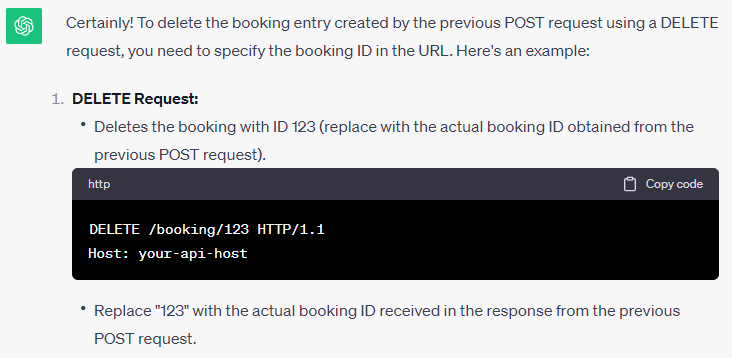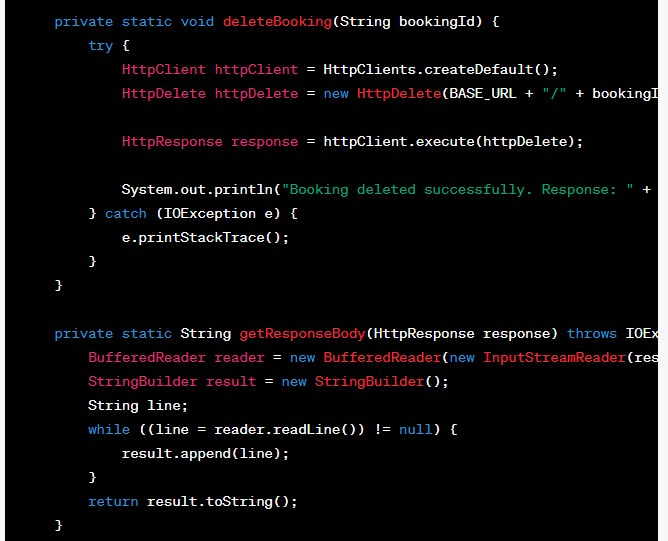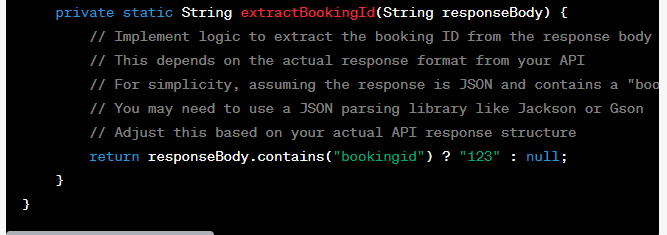Author: Ceyda ÖZAYDIN KASA / SW Test Architect – Test Services
Chat Generative Pre-Trained Transformer (ChatGPT) is an AI system, which is continually learning from huge amount of internet data and so is becoming capable to provide original responses including valuable suggestions to the users. Regarding its solution finder nature, it has been used across a variety of IT domains so far, including software testing as well.
ChatGPT can be useful for software testing in several ways, such as test case generation, test data generation, bug reporting, test management, test automation etc. Here I aimed to explain how to use ChatGPT for the implementation of the manual test cases and automated test scripts, for REST endpoint testing.
Assume that there is an endpoint with URL https://<your-api-host>/booking, and we want to perform some ordinary booking transactions like “create a booking entry, get data of the booking entry, update data of the booking entry, delete booking entry”. Again assume that we will do it manually, by sending each request one by one, to the endpoint. At this point, we can ask ChatGPT how to construct the requests, i.e. request bodies (payloads) and about the positive and negative test cases. Let’s see our conversation now…
I asked Chat GPT the following:
- I have the following endpoint with some conditions. Endpoint: /booking, Request Type: POST. This endpoint excepts a JSON body with the following attributes: firstname (max of 20 characters, no numbers), lastname (max of 20 characters, no numbers), totalprice (max of 5 digits), depositpaid (boolean value), bookingdates (includes checkin (a valid date) and checkout (a valid date) ) where checkin is always less than or equal to checkout, additionalneeds (max of 15 characters, no numbers). Please provide me with HTTP Request call for this REST endpoint. Then please provide me a list of manual test cases (positive and negative) to test this endpoint.



As you may have already seen, the answer from ChatGPT is easy to understand and provides enough information about create operation and about the list of the test cases, which gives a solid foundation to start testing. At the end it provides recommendations and best practices too.
In order to get information about other operations such as read, update and delete, we continue to ask ChatGPT further. See below…
- For the same endpoint: /booking, please provide me with HTTP Request to get data of the booking entry created by the previous POST request. This time Request Type: GET.


- For the same endpoint: /booking, please provide me with HTTP Request to update some of the fields of the booking entry created by the previous POST request. This time Request Type: PUT.

Please pay attention here. The method PUT obligates the existence of all request parameters (firstname, lastname, totalprice, depositpaid, bookingdates (includes checkin and checkout), additionalneeds) in the request body. Therefore, in the answer given above, PATCH method is allowed only. But ChatGPT has overlooked this error, due to some of its limitations by nature, which are explained at the end of the text.
- For the same endpoint: /booking, please provide me with HTTP Request to delete the booking entry created by the previous POST request. This time Request Type: DELETE.

Instead of testing manually, you can prefer to run HTTP commands automatically, by implementing a test script. You can ask ChatGPT for the code you require…
- Please provide me with java code to test these HTTP Request automatically, given for the endpoint: /booking







Again a clear and well-commented answer from ChatGPT. It also provides the detailed explanation for the script and required packages to be installed, which is allowing testers to quickly generate and customize automated tests.
Limitations of ChatGPT when using for testing
While ChatGPT has a lot of potential to be a valuable support for software testing, it still has some downsides.
ChatGPT relies on patterns it has learned from the text it has been trained on and does not possess the actual meaning and domain knowledge behind it. Therefore, it can sometimes provide contextually incorrect responses. Testers need to have a solid understanding of the coding language being used, the application under test, packages being used etc., in order to detect plausible-sounding, believable, but incorrect answers from ChatGPT.
Furthermore, ChatGPT does not run the command / code itself and therefore has no way to know if the command / code generated is runnable. If ChatGPT attempts to offer a wrong method like PUT instead of PATCH, or a deprecated method like “find_element_by_*” to locate UI elements, tester must have the ability to recognize what the problem is.
Conclusion
ChatGPT is a powerful AI tool with huge potential in software testing. From test management to test automation, it can help simplify and speed up testing process and ensure top quality assurance. However, it has various limitations and cannot perform complicated tasks, which require critical thinking and creativity of human testers. So it should be seen as a tool that can improve the work of human testers.



